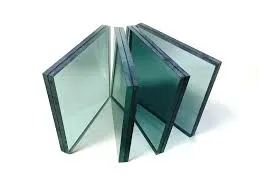What is Glazing in Architecture?
Glazing in architecture refers to the use of glass in building design, primarily as windows, doors, and facades. It plays a crucial role in the aesthetics, functionality, and energy efficiency of a structure. The practice of glazing has evolved over the years, incorporating advancements in technology and materials that have expanded its applications and benefits in modern architecture.
One of the primary purposes of glazing is to allow natural light into a space. By using large glass surfaces, architects can create bright and inviting interiors while reducing the dependency on artificial lighting during the day. This not only enhances the mood and comfort of the inhabitants but also contributes to energy savings, making buildings more environmentally friendly. The connection between indoor and outdoor environments facilitated by glazing helps create a sense of openness and spatial illusion, making spaces appear larger and more inviting.
What is Glazing in Architecture?
Moreover, glazing can also offer acoustic insulation, which is particularly important in urban environments with high levels of noise pollution. Laminated glass, for example, provides better sound insulation compared to traditional glass types, creating a more serene indoor atmosphere.
what is glazing in architecture
Aesthetically, glazing provides endless design possibilities. From sleek, minimalist designs with extensive glass facades to complex geometric structures, glazing enables architects to push the boundaries of creativity. Glass can be manipulated in various forms, including tinted, frosted, patterned, or curved, allowing for unique architectural expressions. This versatility has made glazing a favored material in contemporary architectural practices, with buildings adopting an increasingly transparent and light-filled approach.
However, the use of glazing is not without its challenges. The increased reliance on glass can lead to issues such as excessive heat gain, glare, and potential privacy concerns. To address these challenges, architects incorporate shading devices, such as overhangs, awnings, or external louvres, which can minimize solar heat gain while maintaining natural light levels. Additionally, careful consideration of the orientation of the building can optimize the performance of the glazing while reducing the need for artificial heating or cooling.
Safety is also a significant aspect of glazing in architecture. Building codes often dictate the types of glass that can be used in certain applications, especially in environments where there is a risk of breakage. Tempered and laminated glasses are commonly used for their strength and safety benefits, reducing the likelihood of injury in case of accidental breakage.
In conclusion, glazing is an integral aspect of modern architecture, offering numerous benefits in terms of light, energy efficiency, and aesthetic appeal. As technology continues to advance, the possibilities for innovative and functional glazing solutions will only expand, shaping the future of architectural design. Whether enhancing the beauty of a space or improving its ecological footprint, glazing remains a pivotal element in the evolution of architectural practices.
 Afrikaans
Afrikaans  Albanian
Albanian  Amharic
Amharic  Arabic
Arabic  Armenian
Armenian  Azerbaijani
Azerbaijani  Basque
Basque  Belarusian
Belarusian  Bengali
Bengali  Bosnian
Bosnian  Bulgarian
Bulgarian  Catalan
Catalan  Cebuano
Cebuano  Corsican
Corsican  Croatian
Croatian  Czech
Czech  Danish
Danish  Dutch
Dutch  English
English  Esperanto
Esperanto  Estonian
Estonian  Finnish
Finnish  French
French  Frisian
Frisian  Galician
Galician  Georgian
Georgian  German
German  Greek
Greek  Gujarati
Gujarati  Haitian Creole
Haitian Creole  hausa
hausa  hawaiian
hawaiian  Hebrew
Hebrew  Hindi
Hindi  Miao
Miao  Hungarian
Hungarian  Icelandic
Icelandic  igbo
igbo  Indonesian
Indonesian  irish
irish  Italian
Italian  Japanese
Japanese  Javanese
Javanese  Kannada
Kannada  kazakh
kazakh  Khmer
Khmer  Rwandese
Rwandese  Korean
Korean  Kurdish
Kurdish  Kyrgyz
Kyrgyz  Lao
Lao  Latin
Latin  Latvian
Latvian  Lithuanian
Lithuanian  Luxembourgish
Luxembourgish  Macedonian
Macedonian  Malgashi
Malgashi  Malay
Malay  Malayalam
Malayalam  Maltese
Maltese  Maori
Maori  Marathi
Marathi  Mongolian
Mongolian  Myanmar
Myanmar  Nepali
Nepali  Norwegian
Norwegian  Norwegian
Norwegian  Occitan
Occitan  Pashto
Pashto  Persian
Persian  Polish
Polish  Portuguese
Portuguese  Punjabi
Punjabi  Romanian
Romanian  Russian
Russian  Samoan
Samoan  Scottish Gaelic
Scottish Gaelic  Serbian
Serbian  Sesotho
Sesotho  Shona
Shona  Sindhi
Sindhi  Sinhala
Sinhala  Slovak
Slovak  Slovenian
Slovenian  Somali
Somali  Spanish
Spanish  Sundanese
Sundanese  Swahili
Swahili  Swedish
Swedish  Tagalog
Tagalog  Tajik
Tajik  Tamil
Tamil  Tatar
Tatar  Telugu
Telugu  Thai
Thai  Turkish
Turkish  Turkmen
Turkmen  Ukrainian
Ukrainian  Urdu
Urdu  Uighur
Uighur  Uzbek
Uzbek  Vietnamese
Vietnamese  Welsh
Welsh  Bantu
Bantu  Yiddish
Yiddish  Yoruba
Yoruba  Zulu
Zulu 

